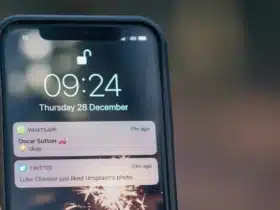QR codes are innovative solution to store and quickly convey information making them incredibly versatile.
Understanding the data capacity of QR codes can help businesses and individuals maximize their use. In the article, we explore the limits of QR codes and the factors that influence their data capacity.
Understanding QR Code Data Capacity
QR codes are designed to store information in a compact, easily scannable format. They can hold various types of data, including numeric, alphanumeric, binary, and even Kanji characters. The amount of data a QR code can hold depends on several factors, including the type of data, the version of the QR code, and the error correction level.
Types of Data and Their Capacities
If you want to create qr code free, you should know that different types of data have different capacities. Here’s a breakdown of how much data can be stored in a QR code based on data type:
Numeric Data
This is the most efficient type of data for QR codes. A QR code can store up to 7,089 numeric characters. This high capacity makes QR codes ideal for applications like serial numbers, IDs, and other numeric data.
Alphanumeric Data
QR codes can store up to 4,296 alphanumeric characters, which include numbers and letters, making it suitable for URLs, text, and other mixed-character information.
Binary Data
When storing binary data (such as files or other non-text data), a QR code can hold up to 2,953 bytes. This format is often used for more complex data storage needs.
Kanji Characters
For languages that use Kanji, such as Japanese, a QR code can store up to 1,817 Kanji characters. This is particularly useful in regions where these characters are prevalent.
QR Code Versions and Their Impact
QR codes come in different versions, ranging from Version 1 to Version 40. Each version increases the number of modules (the black and white squares) in the code, thus increasing its data capacity:
- version 1 QR code has 21 x 21 modules and can hold a relatively small amount of data;
- version 40 QR code has 177 x 177 modules and can store significantly more information.
Choosing the appropriate version depends on the amount of data you need to encode. Higher versions allow for more data but also result in larger QR codes, which may be less suitable for certain applications.
Error Correction Levels
QR codes have built-in error correction capabilities, which allow them to be scanned accurately even if they are partially damaged or obscured. There are four levels of error correction:
- L (Low);
- M (Medium);
- Q (Quartile);
- H (High).
While higher error correction levels increase the robustness of the QR code, they also reduce the amount of data that can be stored. For instance, a QR code with a high error correction level (H) will have a lower data capacity compared to one with a low error correction level (L).
Practical Applications and Considerations
When deciding how much info can a QR code hold for your specific application, it’s essential to balance the amount of data with the desired size and error correction level. For instance, if you need a small QR code for a business card, you might choose a lower version with a medium error correction level to ensure scannability and sufficient data capacity.
You can easily create qr code free using online generators that allow you to specify the type and amount of data, the desired error correction level, and other customization options. These tools make it simple to generate a QR code that meets your specific needs.
Conclusion
The amount of data a QR code can hold varies depending on the type of data, the QR code version, and the error correction level. Understanding these factors allows you to maximize the efficiency and effectiveness of your QR codes.
Whether you need to store numeric data, URLs, or complex binary information, QR codes offer a flexible and reliable solution. Applying tools to create QR code free, you can generate customized QR codes that meet your data storage requirements and enhance your digital strategy.


















